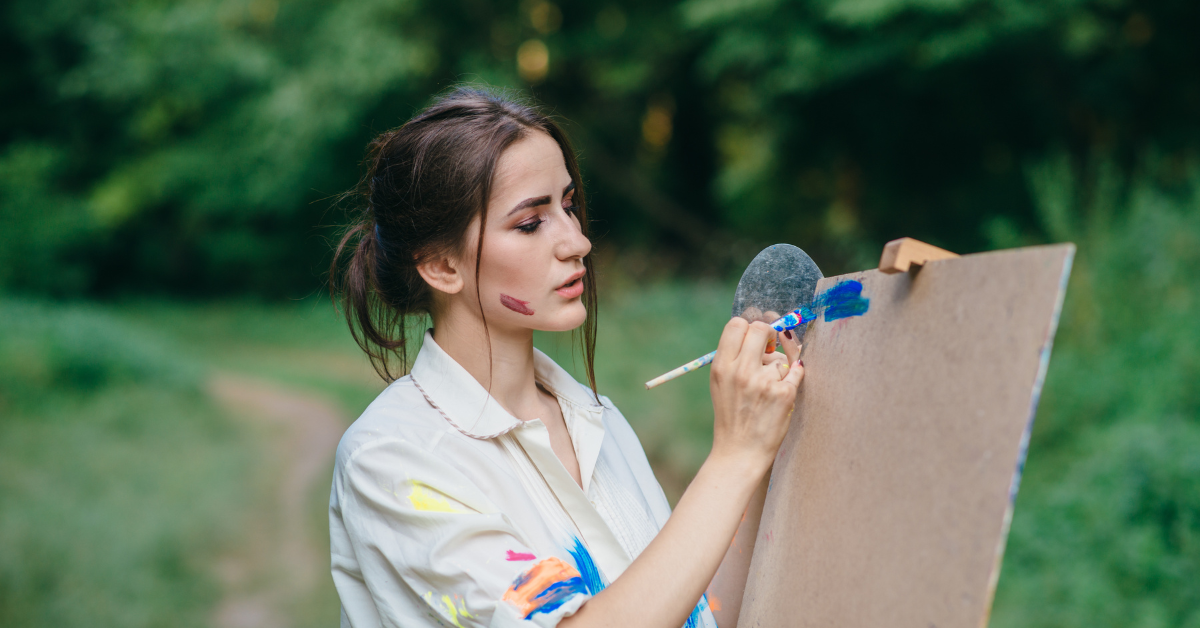If you’re an oil painter, you’ve likely faced the frustration of leftover paint drying out overnight. Whether you’re midway through a masterpiece or just experimenting with tones, knowing how to save oil paint for later can save money, reduce waste, and keep your workflow consistent.
In this guide, we’ll walk through How to Save Oil Paint for Later Use, practical, artist-approved methods to preserve oil paint between sessions. You’ll also discover tools, techniques, and some tricks to extend the life of your paint while maintaining its quality.
Why Saving Oil Paint Matters
Oil paint isn’t cheap. Artists often spend a considerable amount on high-quality pigments and mediums. When unused paint dries on the palette, it’s not just a waste of resources—it’s a disruption to your creative rhythm.
Saving oil paint helps you:
- Reduce material costs
- Maintain color consistency across layers
- Spend more time painting, less time remixing
- Create more sustainable art practices
By learning how to preserve your paint properly, you extend both your materials and your inspiration.
Understanding Oil Paint Drying Times
Oil paint doesn’t dry by evaporation. It cures through oxidation, a process that can take days or even weeks depending on:
- Pigment type (e.g., umber dries faster than titanium white)
- Environmental factors (humidity, temperature, airflow)
- Paint thickness
- Presence of additives or mediums
This slow drying nature offers opportunities to preserve the paint, but only if handled correctly.
Common Mistakes Artists Make
Before diving into the preservation methods, it’s important to avoid these common errors:
- Leaving paint uncovered in open air
- Storing the palette near direct sunlight or heat sources
- Using non-airtight containers
- Forgetting to clean edges where paint skins first
- Adding drying mediums unknowingly
Avoiding these simple mistakes is the first step in ensuring your paint stays fresh for future use.
Methods to Save Oil Paint for Later
There are several effective strategies to keep oil paint usable beyond one painting session. Below are some of the most reliable ones.
Using Airtight Containers
One of the simplest and most effective methods is placing your palette in an airtight box or sealed plastic container.
Pros:
- Slows oxidation by reducing airflow
- Easy to find in most art or home stores
- Great for short-term storage (1–3 days)
Tip: Place the container in a cool spot away from sunlight to extend effectiveness.
Plastic Wrap Technique
Plastic wrap is a go-to for many artists due to its flexibility and ease of use.
How to do it:
- Gently press plastic wrap over the surface of your palette.
- Ensure it makes contact with the paint blobs to limit air pockets.
- Tape the edges to seal.
Pros:
- Quick and accessible
- Minimizes air exposure
- Works well for overnight preservation
This method is particularly useful when you have small palettes or limited studio space.
Freezing Your Palette
Yes, you can literally freeze oil paint. Many artists use a freezer or mini-fridge to extend paint life.
How to do it:
- Place the entire palette inside a sealed plastic bag or container.
- Put it in the freezer.
- Remove and allow it to come to room temperature before painting again.
Pros:
- Can preserve paint for up to several weeks
- Reduces oxidation nearly completely
Cons:
- Requires access to freezer space
- Risk of condensation when thawing (wrap carefully)
Freezing is especially helpful when working on large pieces over multiple sessions.
Using a Water Barrier
Another surprising yet effective method involves using water to block oxygen.
How to do it:
- Fill a shallow airtight container with water (about an inch deep).
- Place your palette inside the container on a raised platform, keeping the paint above the water.
- Seal the container.
Pros:
- Maintains a humid environment
- Prevents skin formation
- Works well for water-miscible oil paints
Note: Avoid direct contact between water and traditional oil paint, as it can degrade the pigment.
Clove Oil to Prevent Skinning
Clove oil is a natural drying inhibitor. Just a few drops can dramatically slow the drying process of oil paint.
How to use it:
- Dab a bit of clove oil on a cotton ball and place it in your storage container—do not mix it directly into the paint unless you’re experienced.
- Alternatively, lightly mist the paint surface with a clove oil solution.
Pros:
- Extends drying time
- Prevents skin from forming on palette
- Works well in combination with other methods
Use sparingly, as overuse may impact paint handling or adhesion on canvas.
Table: Storage Methods vs. Longevity
| Method | Average Duration | Tools Required | Best For |
| Airtight Container | 1–3 days | Sealed box, palette | Everyday painters |
| Plastic Wrap | 1–2 days | Cling film | Quick covers |
| Freezing | Up to 3 weeks | Freezer, sealed bag | Long breaks or layered pieces |
| Water Barrier | 2–5 days | Shallow container, platform | Studio with stable temperature |
| Clove Oil | 3–7 days | Cotton ball, oil | Artists in humid or warm areas |
Palette Types and Their Impact on Storage
Your choice of palette can influence how well your paint survives.
Glass Palettes:
Easy to clean and seal, ideal for freezer use.
Wood Palettes:
Absorb oil, which may shorten paint life. Wrap thoroughly.
Disposable Paper Palettes:
Not ideal for long-term storage but convenient for quick sessions.
Stay-Wet Palettes (custom builds):
Work well with modifications, such as wet sponges or oil barriers.
The key is to ensure minimal air exposure, regardless of palette material.
Tips for Preserving Mixed Paint
Preserving custom mixed colors can be especially important when working on a detailed or color-consistent project.
- Label colors using small sticky notes or masking tape
- Store blobs individually in tiny containers or film canisters
- Use palette knives instead of brushes to prevent contamination
- Avoid re-mixing each session to keep pigment ratios consistent
Artists working on commissions or realism-based paintings often find this practice essential.
Cleaning and Reusing Your Palette
A clean palette isn’t just a tidy habit—it’s essential for paint preservation.
- Wipe edges regularly to remove drying rings
- Store your palette flat to avoid mixing accidents
- Use a razor blade for dried paint on glass palettes
- Avoid turpentine on wood palettes as it strips natural oils
Maintaining your tools ensures that your paint stays in good condition longer.
What Not to Do When Saving Oil Paint
To avoid costly mistakes, steer clear of these bad practices:
- Don’t leave paint near heat sources or in direct sunlight
- Don’t store uncovered palettes in dusty environments
- Don’t mix drying agents like cobalt drier without knowledge
- Don’t reuse containers that held food—residue can contaminate paint
Being proactive with your storage habits keeps your paints, tools, and health in better condition.
Final Thoughts
Learning how to save oil paint for later is one of the most valuable habits an artist can develop. With the right techniques and tools, you can preserve not just your materials, but also your creative momentum. Whether you choose to freeze your palette, seal it in plastic, or introduce clove oil into your studio practice, the goal is simple—keep your paint fresh so your ideas can flourish.
Frequently Asked Questions
Can I leave oil paint on the palette overnight?
Yes, but only if you cover it well with plastic wrap or use an airtight container.
Is freezing oil paint safe?
Absolutely. Many professionals freeze their palettes to prevent oxidation and extend usability.
Does clove oil affect paint quality?
If used correctly, no. Avoid direct mixing unless you know how it interacts with your specific pigment or medium.
Can I mix different storage methods?
Yes, combining clove oil and airtight containers is common among artists.
How do I know if paint has gone bad?
If it becomes rubbery, discolored, or smells unusually strong, it’s best to discard it.


